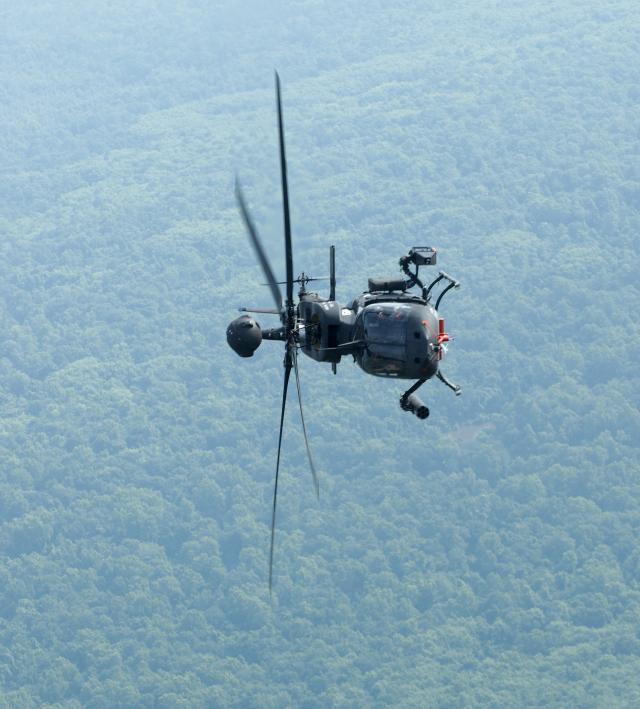The Army last week released its Modernization Plan 2012, an in-depth explanation of how next year’s budget request aims to move the Army toward achieving its objectives to equip the force in the 21st Century.
The goal of the Strategy to Equip the Army in the 21st Century is to develop and provide an affordable and versatile mix of the best equipment available to Soldiers and units to succeed in current and future military operations.
Modernization Plan 2012 lays out the Army’s fiscal year 2012 priorities and programs to help achieve the strategic goal. The plan also provides an overview of the overall strategy, including steps to adapt institutional processes to get the best value and right equipment for Soldiers.
“As you look forward to the strategic environment we think we are going to see in the first half of the 21st century, it’s characterized by four things: persistent conflict, an uncertain operational environment, decreasing access to resources, and increased cost of labor and material,” said Brig. Gen. Edward P. Donnelly, the Army’s director for Joint and Futures within the Department of the Army Deputy Chief of Staff, G8.
“You need to set priorities for the characteristics of the force that’s going to operate in that environment,” Donnelly said, “and then you need to develop, approve, and resource requirements for the equipment that a force with those characteristics needs to be successful in that environment.”
The plan describes three main priorities, which are all interrelated. They are:
- – network the force
- – protect and empower Soldiers
- – deter and defeat hybrid threats
Donnelly explained that networking the force allows the exchange of information all the way from the garrison to the forward edge to the individual Soldiers.
“I think in the case of protect and empower Soldiers, it’s a recognition that the American Solider is really the dominant force on the battlefield for the operational environment today and in the foreseeable future,” said Donnelly. “What we want to do is take the greatest advantage we can of that individual. Protecting them and empowering them through the means of the network.”
The third priority, deter and defeat hybrid threats, is also essential to the modernization plan because these threats are a characteristic of those uncertain operational environments, he said.
“Asymmetry is a characteristic of both the present and the future battlefield because we are facing enemies who are not able to compete with us symmetrically,” said Donnelly. “They are going to come at us differently.”
Hybrid threats, Donnelly explained, are when the enemy takes a capability that has a generally well-understood usage and generally well-understood effect, such as a cell phone, and uses it in a different manner so that it achieves a different effect than the one that is understood.
Along with the three priorities, the modernization plan also highlights seven systems which are identified as critical to the Army’s success in operations — current and future. These systems are:
- – Joint Tactical Radio System, which will provide simultaneous data, video and voice communications to dismounted troops, aircraft and watercraft. JTRS components include a Wideband Data Radio (Ground Mobile Radio), a Handheld Manpack Small and Rifleman Radio.
- – Warfighter Information Network-Tactical, which will provide the broadband backbone communications necessary for operational forces. WIN-T extends an IP-based satellite and line-of-sight communications network through the tactical force, supporting telephone, data and video.
- – Ground Combat Vehicle, the Army’s replacement program for the Infantry Fighting Vehicle in Heavy Brigade Combat Teams and the centerpiece of the Army’s overall Combat Vehicle Modernization Strategy.
- – Distributed Common Ground System-Army, which provide integrated intelligence, surveillance and reconnaissance data to airborne and ground sensor platforms and is the Army’s component of the Department of Defense Distributed Common Ground/Surface System family of systems.
- – Joint Battle Command-Platforms, which enable a widely dispersed command and control capability across all formations and the entire spectrum of joint military operations.
- – Paladin Integrated Management, which funds readily-available low-risk, upgrades that enhance the responsiveness, force protection, survivability and operational readiness of the self-propelled howitzer fleet.
- – Kiowa Warrior, an OH-58 model upgrade which converts D models to F models with enhanced cockpit sensor upgrades.
“The equipment that we’re asking for is a blend of versatility and affordability,” said Donnelly. “It meets requirements of the FY-12 budget while maintaining balance between current and future needs,” he said.
The plan reflects the designed budget against the roles, missions and tasks that the Army could possibly face in the current strategy while keeping future operations in mind.
“If there’s a change in the strategy that recasts the role of the Army,” said Donnelly, “then we might need more or we might need less. But the key is ensuring that our strategy to equip the Army is both nested within the security strategies and concepts; and balanced in terms of capabilities and resources.”
[Download not found]









